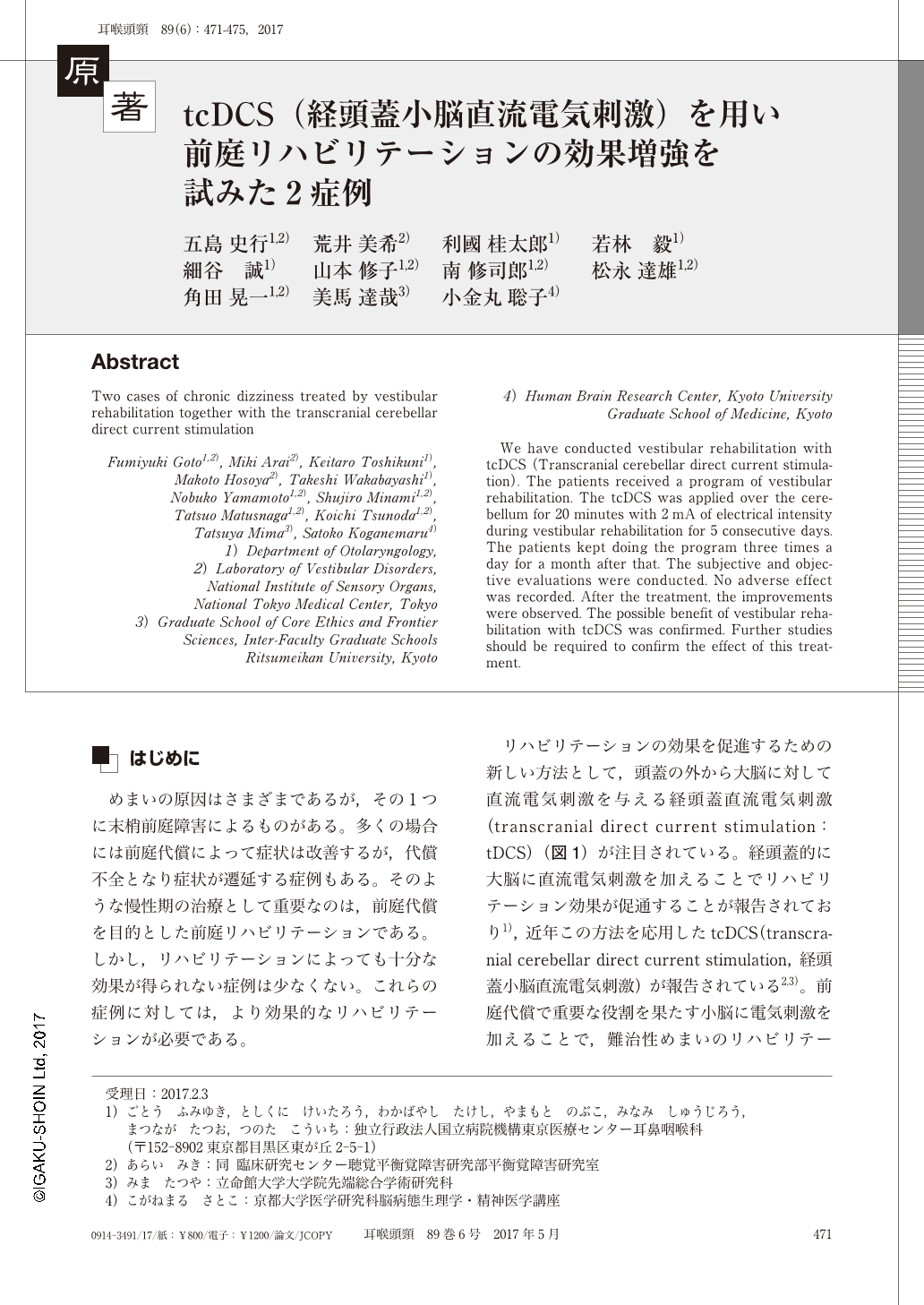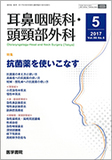Japanese
English
- 有料閲覧
- Abstract 文献概要
- 1ページ目 Look Inside
- 参考文献 Reference
はじめに
めまいの原因はさまざまであるが,その1つに末梢前庭障害によるものがある。多くの場合には前庭代償によって症状は改善するが,代償不全となり症状が遷延する症例もある。そのような慢性期の治療として重要なのは,前庭代償を目的とした前庭リハビリテーションである。しかし,リハビリテーションによっても十分な効果が得られない症例は少なくない。これらの症例に対しては,より効果的なリハビリテーションが必要である。
リハビリテーションの効果を促進するための新しい方法として,頭蓋の外から大脳に対して直流電気刺激を与える経頭蓋直流電気刺激(transcranial direct current stimulation:tDCS)(図1)が注目されている。経頭蓋的に大脳に直流電気刺激を加えることでリハビリテーション効果が促通することが報告されており1),近年この方法を応用したtcDCS(transcranial cerebellar direct current stimulation,経頭蓋小脳直流電気刺激)が報告されている2,3)。前庭代償で重要な役割を果たす小脳に電気刺激を加えることで,難治性めまいのリハビリテーション治療に対する促通効果が期待できる可能性がある。今回,tcDCSを用い,難治性の代償不全となった片側前庭障害症例に対して前庭リハビリテーション治療を試みたので報告する。
We have conducted vestibular rehabilitation with tcDCS(Transcranial cerebellar direct current stimulation). The patients received a program of vestibular rehabilitation. The tcDCS was applied over the cerebellum for 20 minutes with 2 mA of electrical intensity during vestibular rehabilitation for 5 consecutive days. The patients kept doing the program three times a day for a month after that. The subjective and objective evaluations were conducted. No adverse effect was recorded. After the treatment, the improvements were observed. The possible benefit of vestibular rehabilitation with tcDCS was confirmed. Further studies should be required to confirm the effect of this treatment.

Copyright © 2017, Igaku-Shoin Ltd. All rights reserved.


